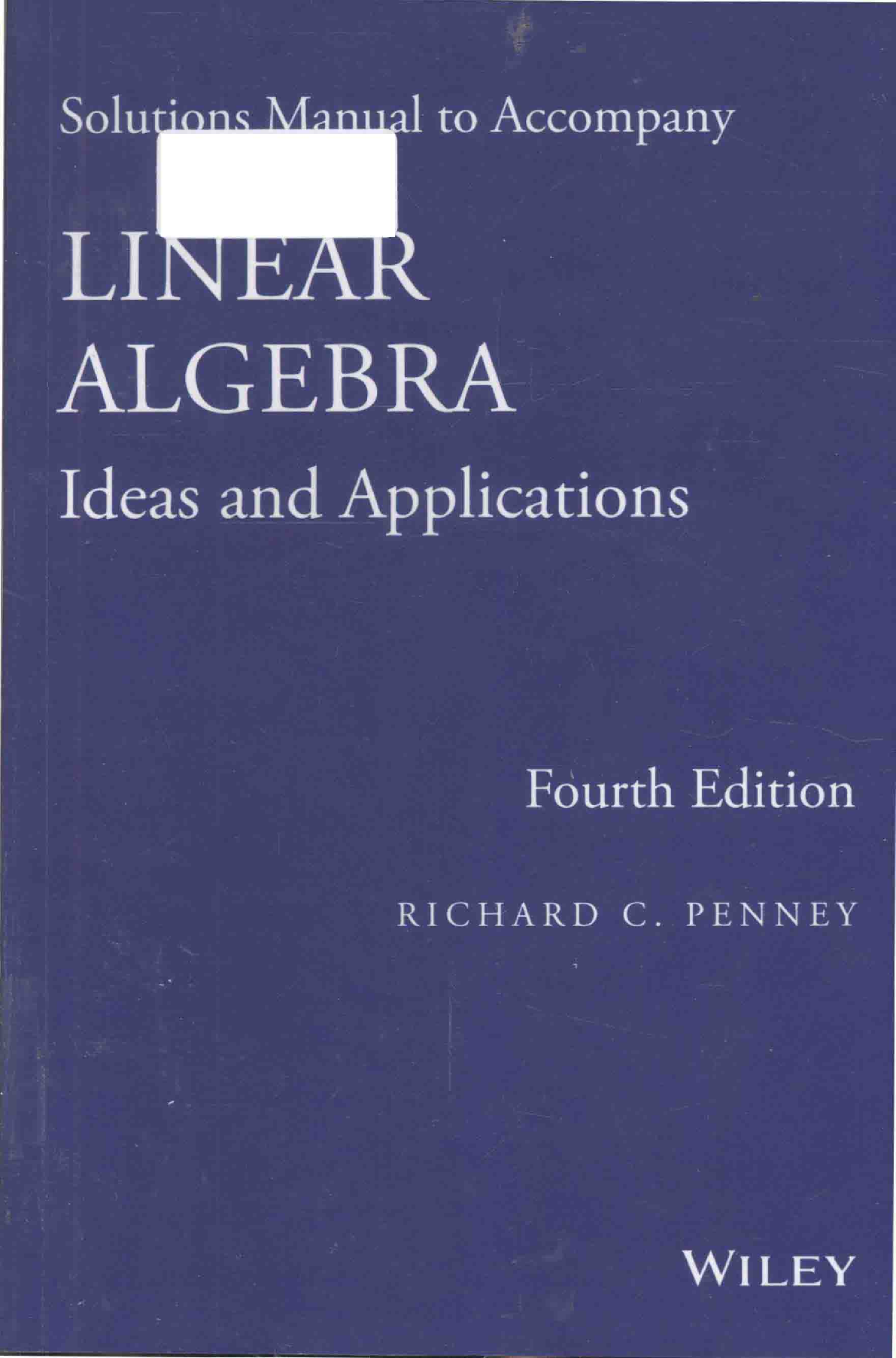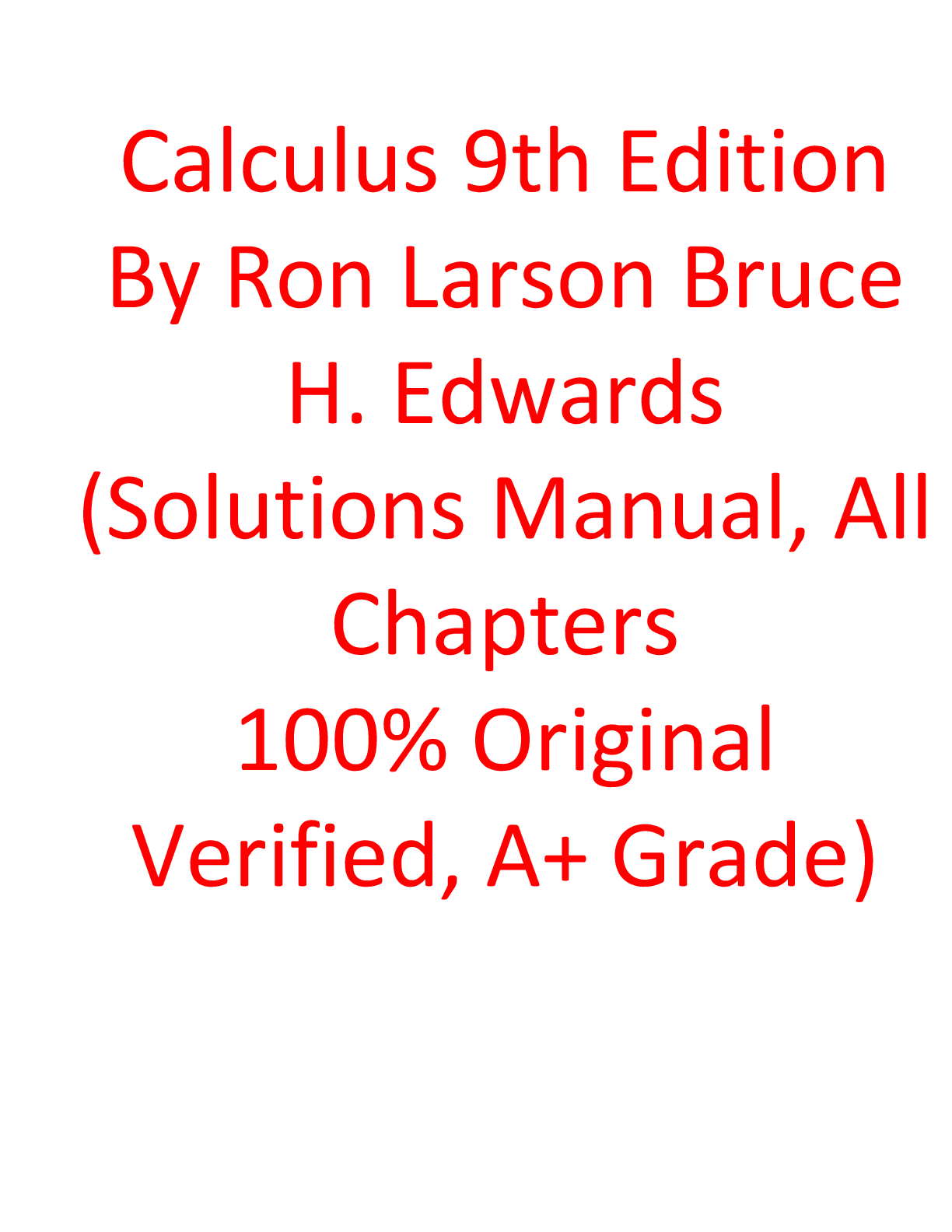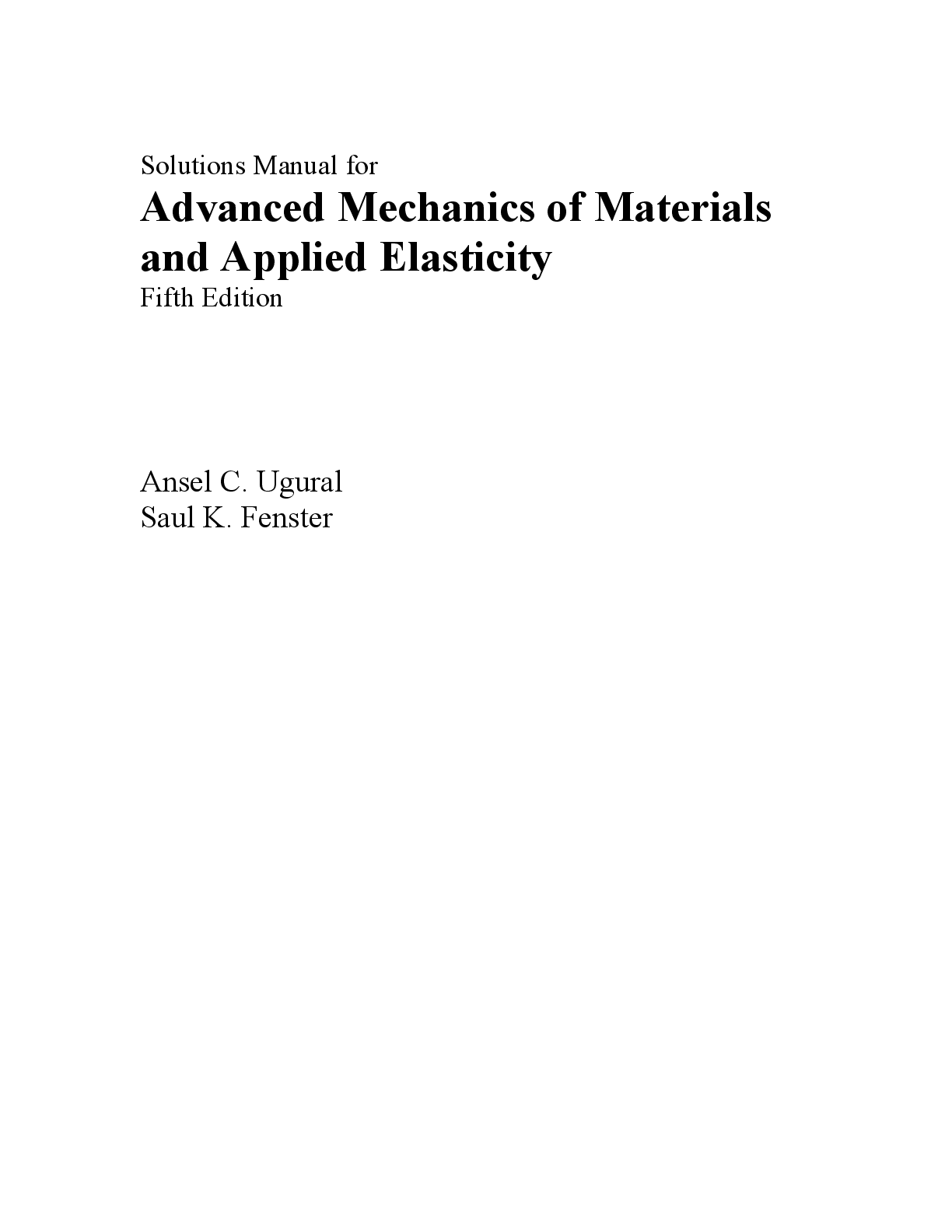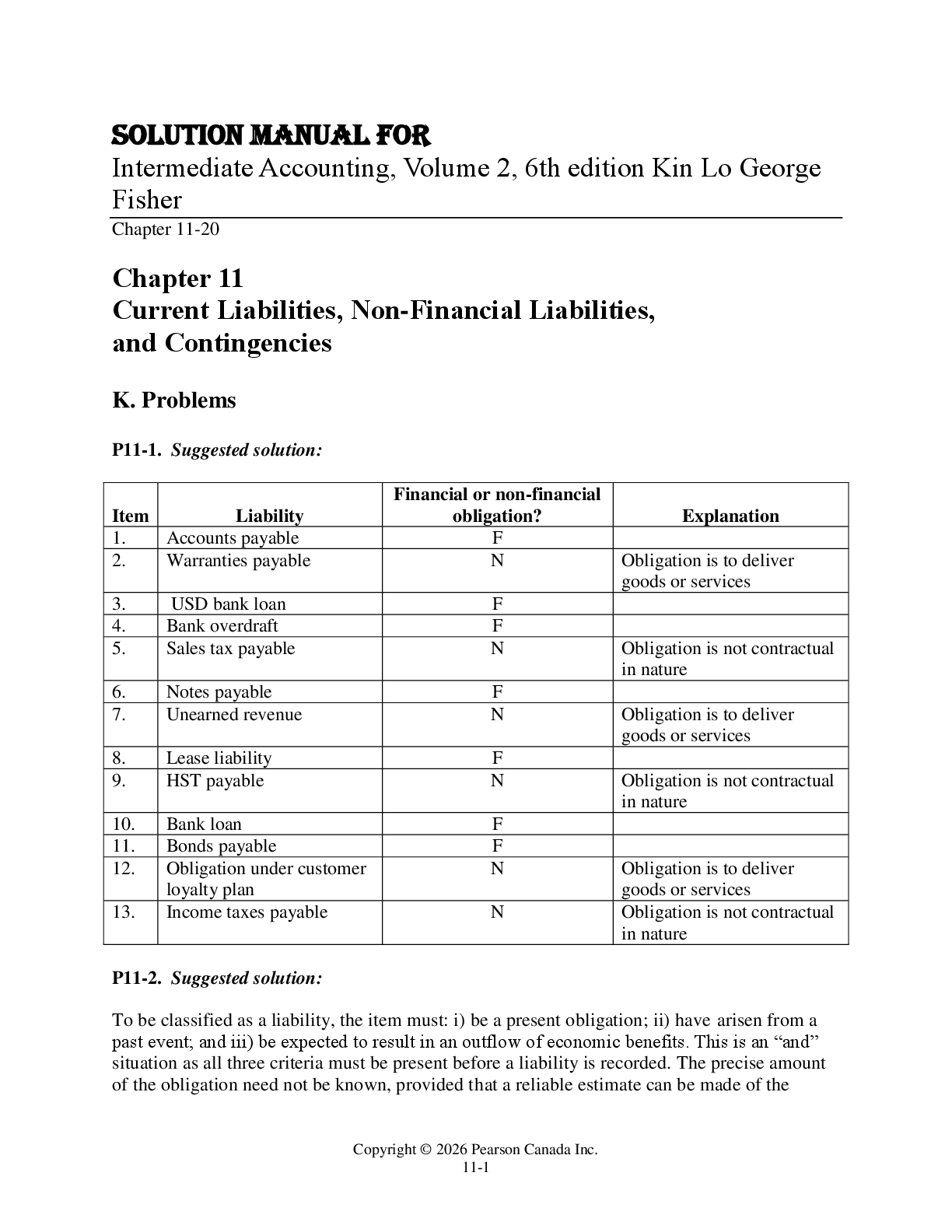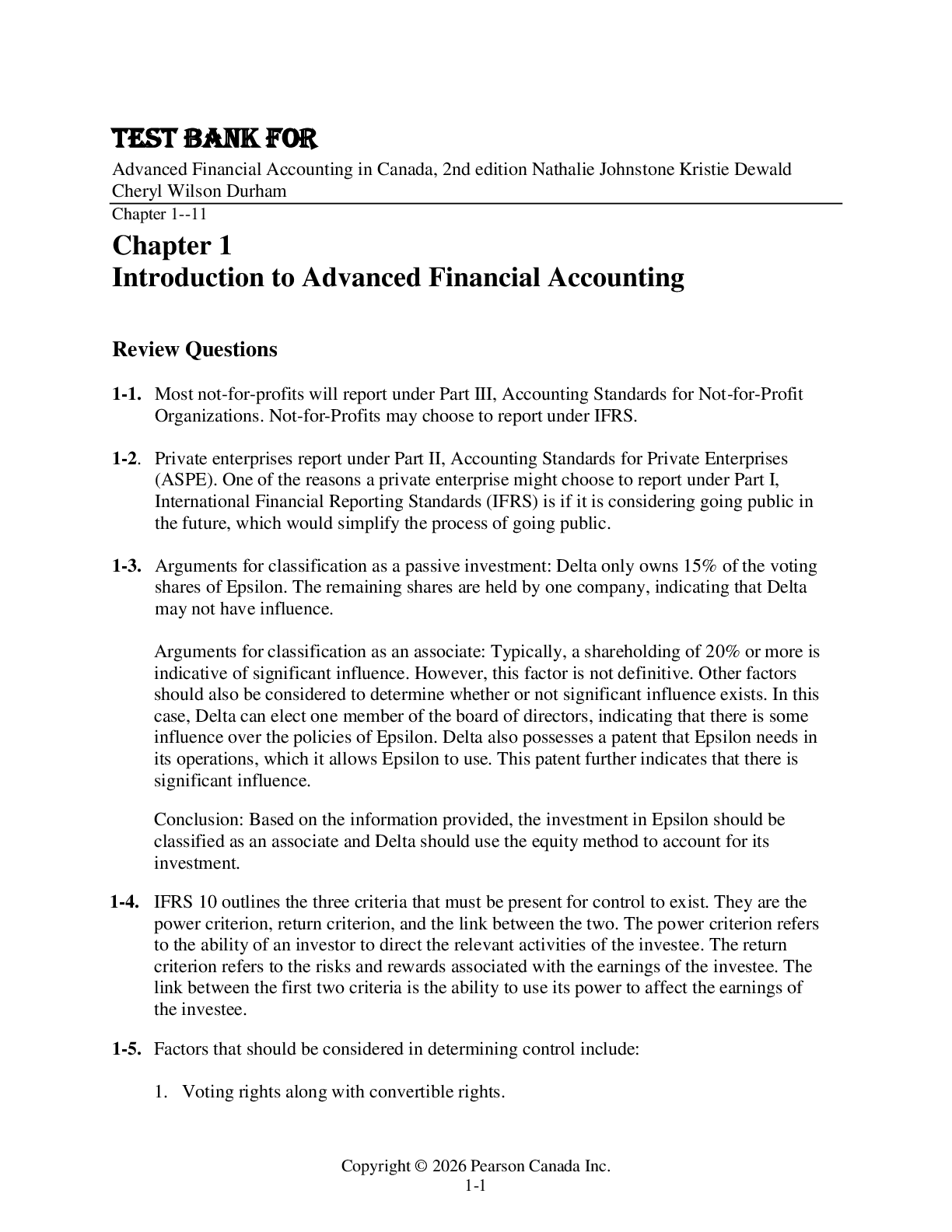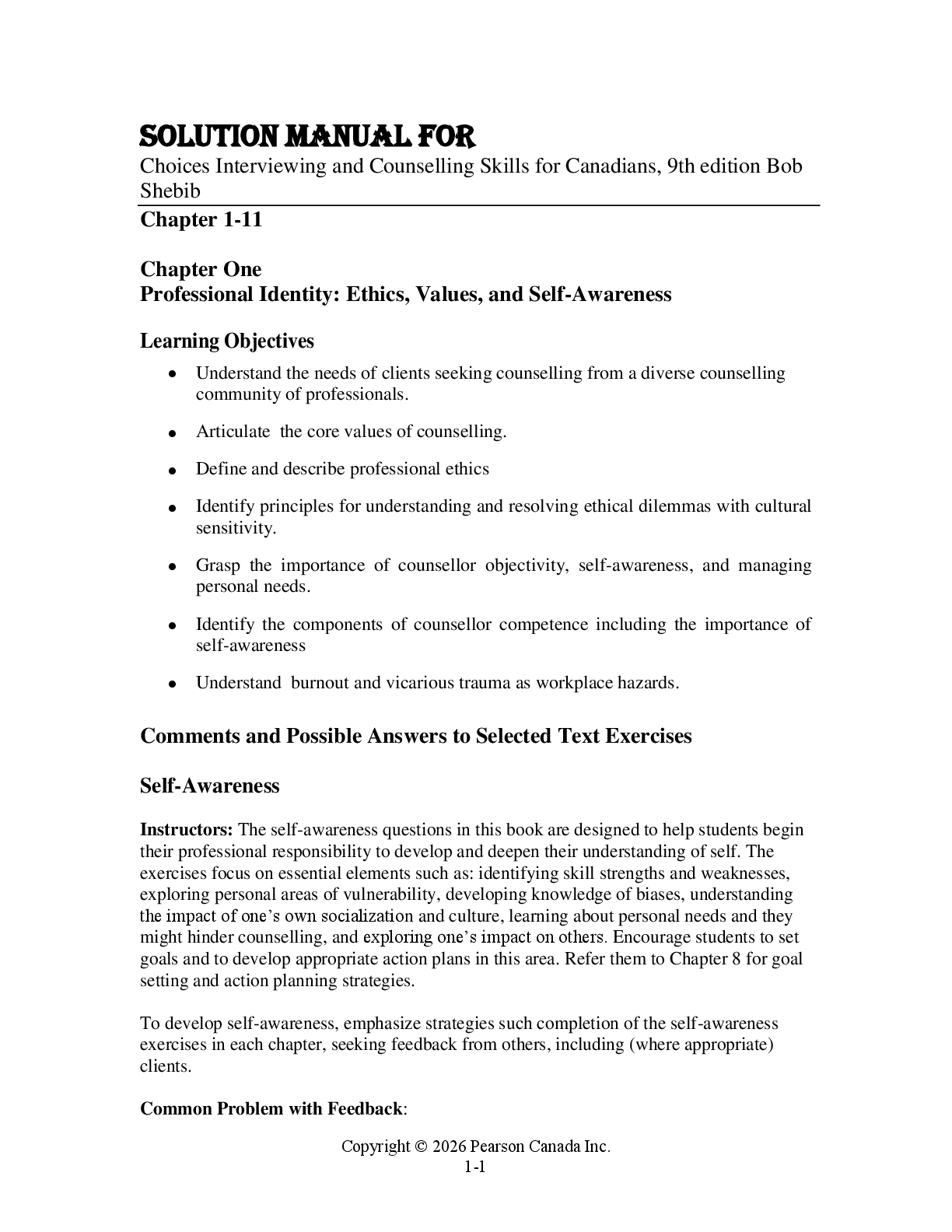Economics > SOLUTIONS MANUAL > ECE MISC[Solutions Manual] Modern Digital and Analog Communications Systems - B P Lathi. (All)
ECE MISC[Solutions Manual] Modern Digital and Analog Communications Systems - B P Lathi.
Document Content and Description Below
Let us denote the signal in question by g j t ) and its energy by E,. For parts (a) and (b) 4 r 4 r 4 r (e) ~ ~ - ~ ~ s i n ~ r d r = f ~ ~ d t - ~ / ~ ~ s ~ ~ d t = n + O = ~ 2n (d) E. =1 (lsin t ... 12 dt = 4 [i12" dt -;1.cos 2 dt] = Iln + 01 = 4n Sign change and time shift do not affect the signal energy. Doubling the signal quadr~iplesits energy. In the same way we can sllow that the energy of kp(t) is k2&. Sirnilally. we can show that E x - , = 4n Therefore Ex*, = E:, + E,. Mre are tempted to conclude thar C,*, = E, - t', in general. Let us see. Therefore. in general Eli,# El $ E, 2.1-4 This prob!em is identical to Example 2.2b. except that ;u.i f a.J n this case. the third integral in Po (see p. 19 is not zero. This integral is given by ClCz T/? = T-,r. lim T[ ~ T , 2 c o l i ~ l - O 2 ) 0 t + c o s ( 2 ~ l t + (9, + 8 2 ) rltITherefore 2.1-5 2 ( ~ ' ) ~ d t = 64/7 (a)p-y5 f 12(-t3)2dt = 64/7 1 ' ? 2 2 (b)Pz. = J 2 ( 2 t ) dt = 4(64/i) = 256/7 (e)Peg= $ /_2(ct')2dt = 64r?/l Sign change of a signal does not affect its power. hfultiplication of a signal by a constant r . increases the power by a factor 2. w2(t) rlt =- dt = 0.5 T;2 T/2 r~ Py= !kn= ;J ,q(t)g4i t ) dt I zD ~ D * , ~ J ( - A - - ~ ) ~ dt T i 2 - 7 / 2 k=m rrm The integrals of the cross-product terms (when k # r ) are finite because the integrands are periodic signals Onnde up of sinusoids!. These terms. when dh~idedby T- oo. yield zero. The remaining terms ( k= r . ) yield k e n : 2.1-8 (a)Power of a sinusoid of amplitude C is c 2 / 2 [Eq.(2.6a)l regardless of its frequency (4, # O j and phase. Tllerrfore. in this case P = (10)'/2 = 50. (b) Power of a sum of sinusoids is equal to the sum of the powers of the sinusoids IEq. (2.6b)j. Therefore. in this case P = + = 178. (c) (10 + 2 sin 3t) cos 10t = locos lint 0 sin 131 - sin 3,. Hence from Eq. (2.6b) P = + 4 + 4 = 51. (d) locos St cos lot = 5(cos St +cos 1 3 . Hence from Eq. (2.6b) P =af + e& = 25. (E) IOsin itcos 101= 5(sin 151- sin S t . Hence from Eq.(2.6b) P = %+ = 23. ( f ) rtatC0S40i = 4 [p-~(a+-ro)t+ cJ("-"o)']. Using the result in Prob. 2.1-7. we obtain P = (1/4) + (1/4) = l j 2 . 2.2-1 Foi a real n T / 2 P, = li~n- (c-")~ rlt = lim - FOIirnegina~y o. let n = jr. Then ( p J f ' ) ( r - ' f t ) d t = lim - tlt = 1Fig. S2.3-2 CIlearly. if o is veal. r-"' is neither energy not power signal. However. if a is imaginary, it is a power signal with POH'CI. 1. The signal g s ( t l can be obtained by (i) delaying g ( t ) by 1 second (replace t with t - 1). (ii) then time-expanding by n factor 2 (replace t with 1,.'2).(iiij then ri~ultiplywith 1.5. Thus p s ( t ) = 1 . 5 g ( i - 1). 2.3-2 All the signals are showri in Fig. 52.3-2 2.3-3 All the signals are shown in Fig. S2.3-3 Fig. 52.99 3.4-1 Using the fact that g ( r ) h ( . t ) = g(O)O(r). we haw ( a ) 0 (b) $A(&) ( c ) i h ( t ) (d) -A t - I ) is) h h ( ; + 3) (f) k d ( u ) (UX L' Hirpital's ride) 1.4-2 In these problems ternember that impulse h ( n : ) is located at 3. = 0.Thus.an impulse 6 ( t- :) is located at 7 = t and so on. (a) The impulse is located at := t and g17) at s = t is g ( t ) . 'Therefore(b) The impulse b(r) is at T = 0 and g(t - s ) at r = 0 is g ( t ) . Therefore Using similar arguments. we obtain ( c ) I (d) 0 (e) r v f ) 5 (g)g ( - 1 ) (h) -c2 2.4-3 Letting n t = 2.. we obtain (for n > 0) Similarly for n < 0 . we show that this integral is - 3 @ ( 0 ) . Therefore 2.5-1 Trl\.lal Take the derivative of lei2 with respect to c and equate it to zero. 2.5-2 (a) In this case El = $ dt = 1 . and (b) f111rs.q t t ) e 0.5.7(!).and the error r ( t j = t - 0.5 over (0 5 t 5 1).and zero outside this intc~.vai -Also E, and E . (the energy of the el rorj are Eg =1'g 2 ( t j d t =1't 2 d += l j 3 and E. -1'(I - 0.5)'df = 1 / 1 2 'I'hc error ( 1 - O..5) is orthogonal to . r ( t )hecause Sote that E, = r 2 ~ , + E,. To explain these results in terms of vector cotacepts we observe from Fig.2.15 that the e r ~ o r\-ector e is orthogonal to the component 12.Because of this orthogonality, the length-square of g jo)e:gy of g ( t ) l is equal to I he sum of the square of the lengths of EX and e isurn of the energies of r,r(t)and : r ( t ) l . 2.5-3 I n this case E, = g 2 ( t ) d t=,/: t2rlt = 1/3. and Thus. r ( t ) 2' 1.5g(t), and the error ~ ( t ) = ~ ( t ) - 1.5g(t) = 1 -- 1.5t over (0 5 t 5 1). and zero outside this inte~v:rl. Also Ec (the cnerglv of the error) is E, = S,'(l - 1.5t)'dt = 1/4. 2.5-4 (a) In this case E, = J,sin22 s t $t = 0.5. and (h) Thus. p(t) zz - ( l / n ) r ( t ) . and the error ~ ( t ) = t + ( I / t ) s i n 2ni over (0 _< t 5 1). and zero outside this itlterval. Also E, and Ee (the cnergy of the error) we [Show More]
Last updated: 2 years ago
Preview 1 out of 155 pages
![Preview image of ECE MISC[Solutions Manual] Modern Digital and Analog Communications Systems - B P Lathi. document](https://scholarfriends.com/storage/_Solutions_Manual__Modern_Digital_and_Analog_Communications_Systems___B_P_Lathi.png)
Buy this document to get the full access instantly
Instant Download Access after purchase
Buy NowInstant download
We Accept:

Reviews( 0 )
$18.00
Can't find what you want? Try our AI powered Search
Document information
Connected school, study & course
About the document
Uploaded On
Sep 08, 2021
Number of pages
155
Written in
All
Additional information
This document has been written for:
Uploaded
Sep 08, 2021
Downloads
0
Views
113

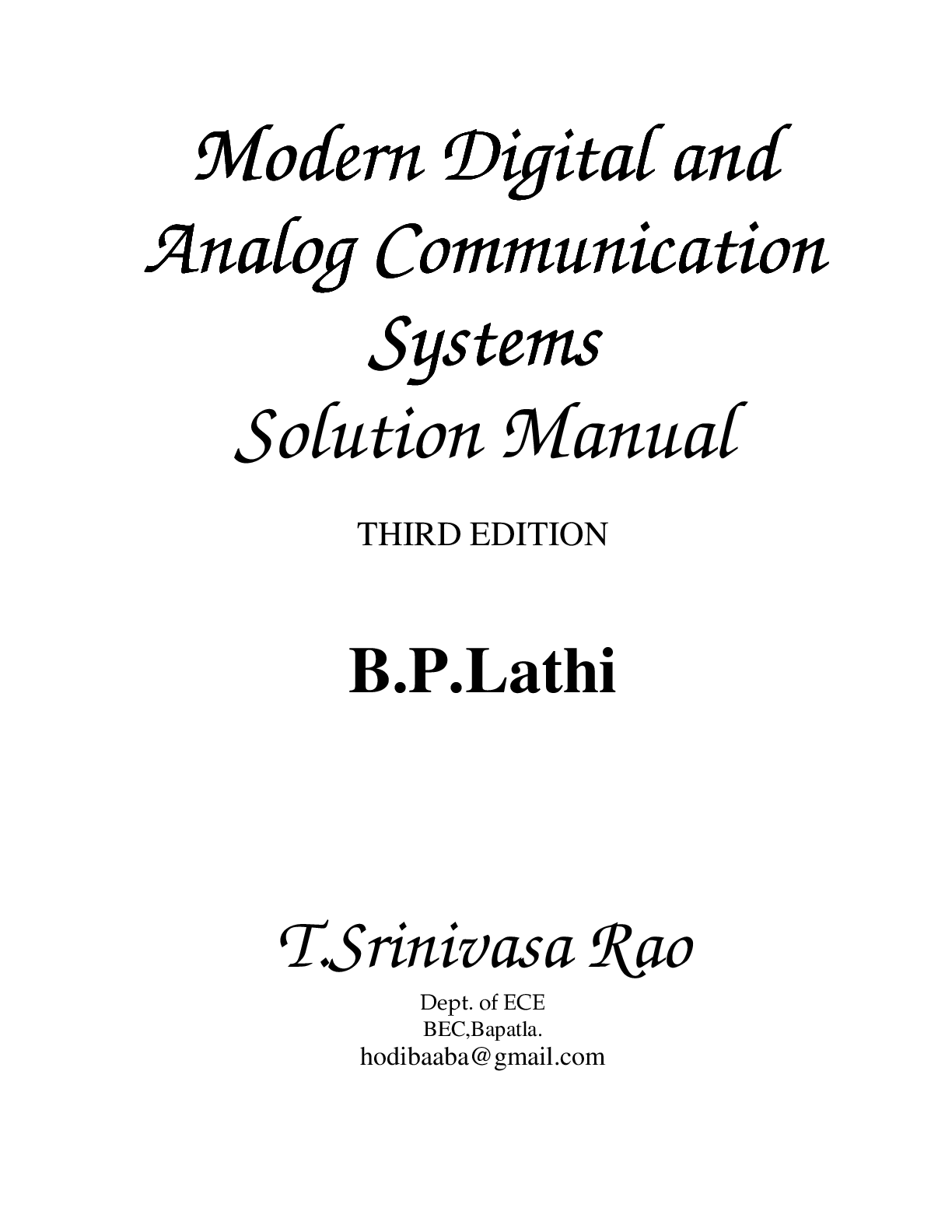
.png)
